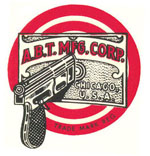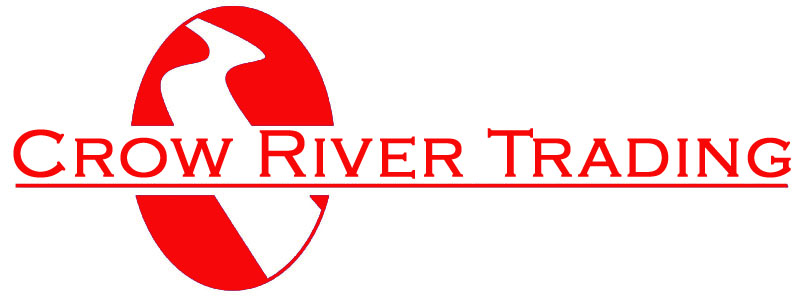The History of the A.B.T. Manufacturing Corporation:
The history of the A.B.T. Manufacturing Corporation is written on the back of one game, the Target Skill. Also known as the Model "A", it was found on the countertops of stores and drinking establishments from sea to shining sea. When there was no counter space available, a special stand was used to place the machine at just the right height for would-be marksmen.
From humble beginnings in Memphis Tennessee in 1919, three gentlemen worked tirelessly to produce the prototypes that would be eventually become the Target Skill game and even have patents granted on the gun design. Walter Tratsch, Jack Bechtol and Gus Adler became partners in the venture, taking the first letter of their last names as the acronym that became the A.B.T. Manufacturing Corporation.

Many were produced under private label for other companies, such as Pace, Rockola and Keeney & sons. These are much more difficult to find, and demand a premium price. Both for their rarity and the fact that the collectors of machines from those companies want them as part of their collections.
Advertised as being legal anywhere, the A.B.T. Manufacturing Corporation played on the fears of shop and saloon owners who were in constant fear that their machines would be confiscated and destroyed. So a game that was considered to be all skill was a gold mine for their sales force. As their advertisements stated; "No matter which model you may choose for your location, whether the oldest or newest, you may be certain that it is an amusement machine designed for long life, player appeal and steady, consistent returns. No machine, no matter what its cost or size, can give you more." Indeed.
The second in line was called the model "C". It is more commonly known as the Big Game Hunter. Within this model were two versions, the 3 hole target and the 1 hole target. It was available with either animal reels or number reels, both with a separate "reward" card. What would a completely amusement related game need an award card for? To pay off winners of course. The reels spin just like a slot machine when the targets are hit, but of course there is some skill involved in making that happen.
Both were made in the same quarter sawed golden oak cabinet with highly decorative marquees to attract attention. Built as both a stand alone machine and a conversion kit for the Model A, it causes one to think that there must be extra parts laying in the basements of the establishments that ran these games.
Next in line was the Model "F". This model added the action of a clockwork motor that is wound when the machine is reset. This motor turns a shaft by means of a chain and raises one inch steel balls, making them appear in a circular window for a second. You must hit the ball when it appears to get the score. This introduced a time element to the game that had not been present up till then. It also signaled the change from the oak case to a painted pine box with a distinctive art deco look. But it was still called the Target Skill.
Around that time, before the United States got involved in World War II, they made another change in cabinet design. Instead of using all custom wood pieces to make the cabinets, why not make a standard cabinet and change models by changing the graphics on the sides and front? Well, that is exactly what they did. Different silk screened paint jobs coupled with different metal heads, or bonnets, made up the variety of models up to and after the war.

The Red White and Blue used a combination of the Big Game Hunter spinning reels and the clockwork motor of the Model F, only with a twist. When the machine was set in motion, the three reels would begin to spin. Hitting the target stopped the reel and when the game was over a special award was given if the reels finished in the red, white and blue order. Other awards were given for all red, all white, etc. Later on, numbers were added to the reels to give even more combinations for awards.
Another variation of this machine was called Fire and Smoke. It used reels showing different kinds of cigarette packs in place of colored ones and would cause the merchant to hand over free cigarettes if the proper combinations were achieved. There was even an A.B.T. book of matches on some of the reels. A kind of "wild card."
One thing was common to all the different models. The gun remained virtually unchanged from 1925 to the early 60s.
(More to come...)
